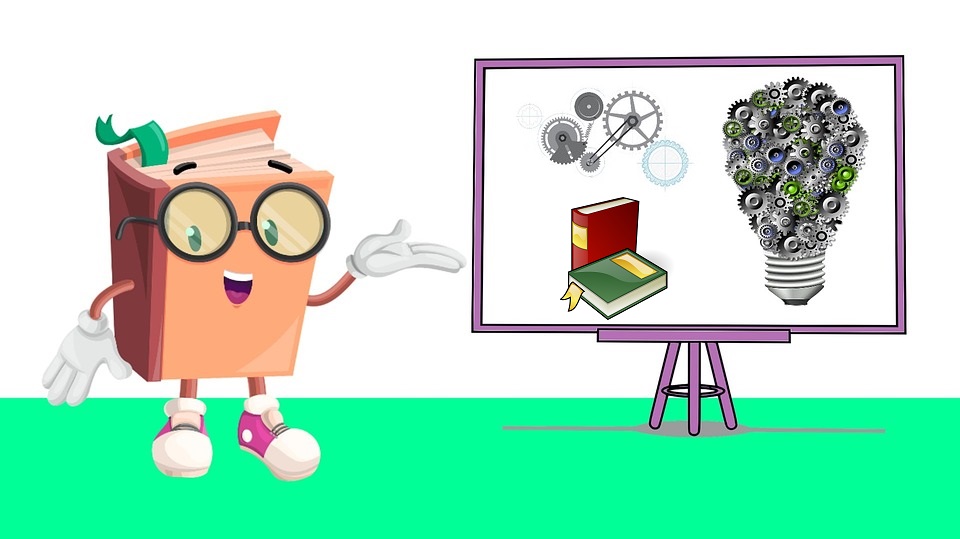How SALT Can Help You Learn Online
Learning and education are critical to a functional society
Learning and education are critical parts of any society. Passing down information is a fundamental part of the human condition. It is a critical part of how we evolved from our more primitive origins and progressed from the dark ages through to the digital age. However, learning hasn’t always been an easy exercise for us. As information evolved and became more complicated and specific, the methods we employ to turn that information into knowledge has also become more complex and individualized.
This has sparked generations of great minds to deconstruct the learning process and give us better insights into the intricate system of the human mind. Theorists and educators, like Neil Flemming, gave us insight into how people learn through visuals, aural, reading, and kinesthetics (VARK). Academics and researchers, like Howard Gardner, brought us ideas like multiple intelligences and how to engage and reach a variety of minds by encompassing an array of learning preferences. Over the past few decades, we have started to see formal education systems, such as schools and institutes of higher learning, adopt more progressive understandings of the learning process and shift the methods of education to address the uniqueness of how we think and learn.
Fast forward to today, the formal education system that has been making gains in helping people learn more effectively by meeting their unique learning needs is now shifting to a new medium – online learning. Online learning or e-learning, is not only becoming the new normal for many types of education it is becoming big business. According to statista.com, Projections show the e-learning market worldwide is forecast to surpass 243 billion U.S. dollars by 2022.
This move toward online learning has a lot of benefits; fewer limitations of location, a greater variety of course and topic selection, and more convenience and flexibility in time and duration, just to name a few. However, these benefits can only really be seen as advantages if the online learning method works with how you learn.
What makes learning online challenging?
One of the challenges associated with the move towards online learning is that we seem to be starting over in our efforts to meet the unique needs of the learner. In-person or classroom-based learning has allowed progressive educators to meet the unique learning needs of their students by providing meaningful interactions and using multiple methods of instruction. Many online learning options haven’t quite figured out how to create the same amount of meaningful interactions or how to incorporate multiple methods of learning. Evidence shows that online learning is not yet able to meet the effectiveness of in-class learning.
Part of the challenge with some online learning, especially self-directed learning, is that it is often heavily dependent on reading and writing. Current online learning is similar to what formal learning was like decades ago, before we started to incorporate strategies like Flemming’s VARK and Gardner’s Multiple Intelligence theories. Online learning interactions cut out most of the personal interactions and can often limit the meaningful group-based discussions and personal connections that are essential to many people’s learning experience.
What is needed are new ideas and new strategies to help educators to create a better understanding of the complex nature of the modern online learner, which will in turn allow those learner take control of their learning journey.
There is where Roman 3 comes in
Over the past number of years, Roman 3 Operations has been working on new ideas and strategies to address the challenges of online learning. We have developed an experimental learning theory that brings together a collection of best practices from learning, intelligence, and personality theories and a strong understanding of how these practices work together during the learning process. This theory has been a passion project of mine, W. Coby Milne, since I finished my Master’s degree in Adult Education. I call this theory the Collective Operation of Learning Domains (COLD). The four domains of COLD are: Acquire, Process, Equate, Execute (APEX). We call our experimental theory the COLD theory of APEX.
The development of this experimental theory comes from years of academic research and the experimentation of applied strategies. While we still have work to do in the academic validation and in the peer review processes, we feel that we truly have something of value in the practical strategies, based on our current research and experimentation. In light of the changes to the world as a result of COVID-19, we felt it necessary to make the themes and strategies available to people who are being forced to engage in online learning like never before. The desire to improve the online learning experience for both the educator and the learner is what led us to the creation of the Strategies for Accessible Learning Tool (SALT).
SALT can support more engagement with online learning
A fundamental concept in Adult Education is critical reflection that can lead to a type of transformation in your learning (Mezirow, 1993). This leads us to the benefits of self-awareness in learning. Conventional wisdom and historical theories support the idea of self-assessment tests, like those used in Flemming’s VARK and Gardner’s Multiple Intelligences theories, providing a valuable critical reflection of how we think about our learning. When learners reflect on how they learn and develop a better understanding their uniqueness in cognitive preferences, they can better apply the strategies that will maximize their education. Studies have found a positive relationship between applying strategies that reach a student’s learning preference and increased engagement in the learning process, both in class and online.
This is the goal of SALT; to provide a simple and engaging assessment that identifies the learning preferences at different stages of the learning process. It then seeks to provide practical suggestions and strategies that can empower the learner to be more effective in their online learning, even if the courses they are engaged in are not designed to use multiple methods of instruction to meet unique learning needs and preferences.
The current version of SALT is designed to be a free tool to support learners with their online learning journeys. However, this only the beginning for SALT and our experimental COLD theory of APEX. The courses offered by Roman 3 Operations, both in-class and online, are designed with the best practices of the COLD theory of APEX approach and supports learners by incorporating the strategies and preferences identified through the use of SALT. Our goal is to provide the best learning experience we can through our learning projects. But what we really want is to help change the learning landscape and support best practice learning programs for everyone. The free SALT assessment will be available to everyone, forever. Furthermore, we will continue to improve the tool and the strategies it uses in order to support learning institutions and online learning companies around the world. In addition, we aim to increase the accessibility of online learning for everyone. As we have already said, learning and education are critical parts to any society and we want to do our part.
The Takeaway
An essential part of maximizing education is by designing learning experiences that meet the needs of the learner. Learning styles and preferences are an important part of meeting those needs. Roman 3 has created a tool, called SALT, to identify individual preferences and recommend strategies, based on our experimental COLD theory of APEX. SALT incorporates best practice approaches to learning that will allow individuals to the most out of their online learning experiences.
If you would like to try out SALT yourself, please use this link.
Roman 3 is an advising and solutions firm that specializes in inspiring progressive action, creating a culture of innovation, and assisting organizations in implementing transformative change. We help you build capacity, learn to collaborate, become progressive, and grow to your full potential. For more information on our services and support, reach out to us at info@roman3.ca


